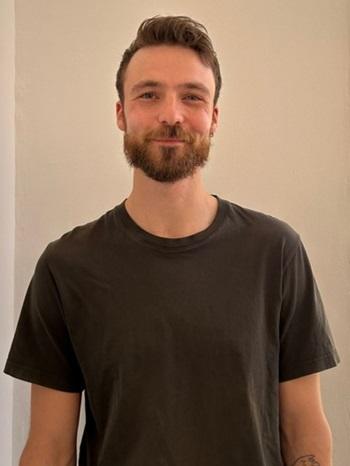Niklas Jungmann M.A.

Landscape Archaeology and Architecture (LAA)
Klassische Archäologie
Institut für Archäologie
Lehrbereich Klassische Archäologie
Winckelmann-Institut
Unter den Linden 6
10099 Berlin
Akademische Laufbahn
04/2025 – 03/2028
Elsa Neumann- Stipendium des Landes Berlin
07/2024 – 10/2024
Predoc-Stipendium der BerGSAS
Seit 04/2024
Promotionsstudium an der Humboldt-Universität zu Berlin (Betreuer: Prof. Dr. Stephan G. Schmid)
10/2021 – 03/2024
Masterstudium an der Humboldt-Universität zu Berlin
Masterarbeit: „Die Wasserversorgung Petras in der Antike. Ein Fallbeispiel am nördlichen Jabal al-Madhbah.“ (Betreuer: Prof. Dr. Stephan G. Schmid)
10/2015 – 07/2021
Bachelorstudium an der Philipps-Universität Marburg
Bachelorarbeit: „Form und Funktion römischer Säulenstraßen. Gerasa und Ephesos im Vergleich.“ (Betreuer: Prof. Dr. Winfried Held)
Archälogische Erfahrung
Seit 2023
Teilnahme an mehreren Kampagnen des Urban Development of Ancient Petra Projekts in Petra (Jordanien) unter Leitung von Prof. Dr. Stephan G. Schmid (HU Berlin) und Prof. Dr. Alexandra Druzynski v. Boetticher (BTU Cottbus)
2019 – 2021
Arbeit als Werkstudent bei der archäologischen Ausgrabungsfirma WiBA GmbH (ehem.
Wissenschaftliche Baugrund-Archäologie e.V.).
Teilnahme an diversen Grabungen in Mittel- und Südhessen
02/2018
Praktikum im Museum für Antike Schifffahrt in Mainz
05/2017
Geoelektrische Prospektion in Hvar und Sveti Klement (Kroatien)
2016 und 2017
Teilnahme an Lehrgrabungen in Leun (Hessen)
Sustainability and Luxury. The Water Management of the Ancient Nabataean City of Petra
Torrential rains and flooding in winter, droughts during the rest of the year - these problems are not only increasingly relevant today, but also posed challenges for the inhabitants of ancient Petra!
My dissertation will be the first to comprehensively investigate, how the city dealt with the extreme climatic conditions. An important part will be to answer the question of how not only the daily needs of the citizens were met, but also how the supply of several luxurious complexes with high water consumption was ensured.
In the dissertation, the Ain Braq aqueduct, supplying the southern part of the city with water, and its relation to surrounding rainwater storage structures will be meticulously investigated. In addition to the precise course and functioning of the aqueduct itself, the focus will also be on the intra-urban distribution of the water. The aim is to find out which buildings had direct access to running water and when. To carry out the project, I will draw on my own surveys in Petra and the accompanying documentation, on the creation of GIS-based maps and 3D-models, as well as on prior research by other scholars.
Die Dissertation wird gefördert durch ein Elsa-Neumann-Stipendium des Landes Berlin.
